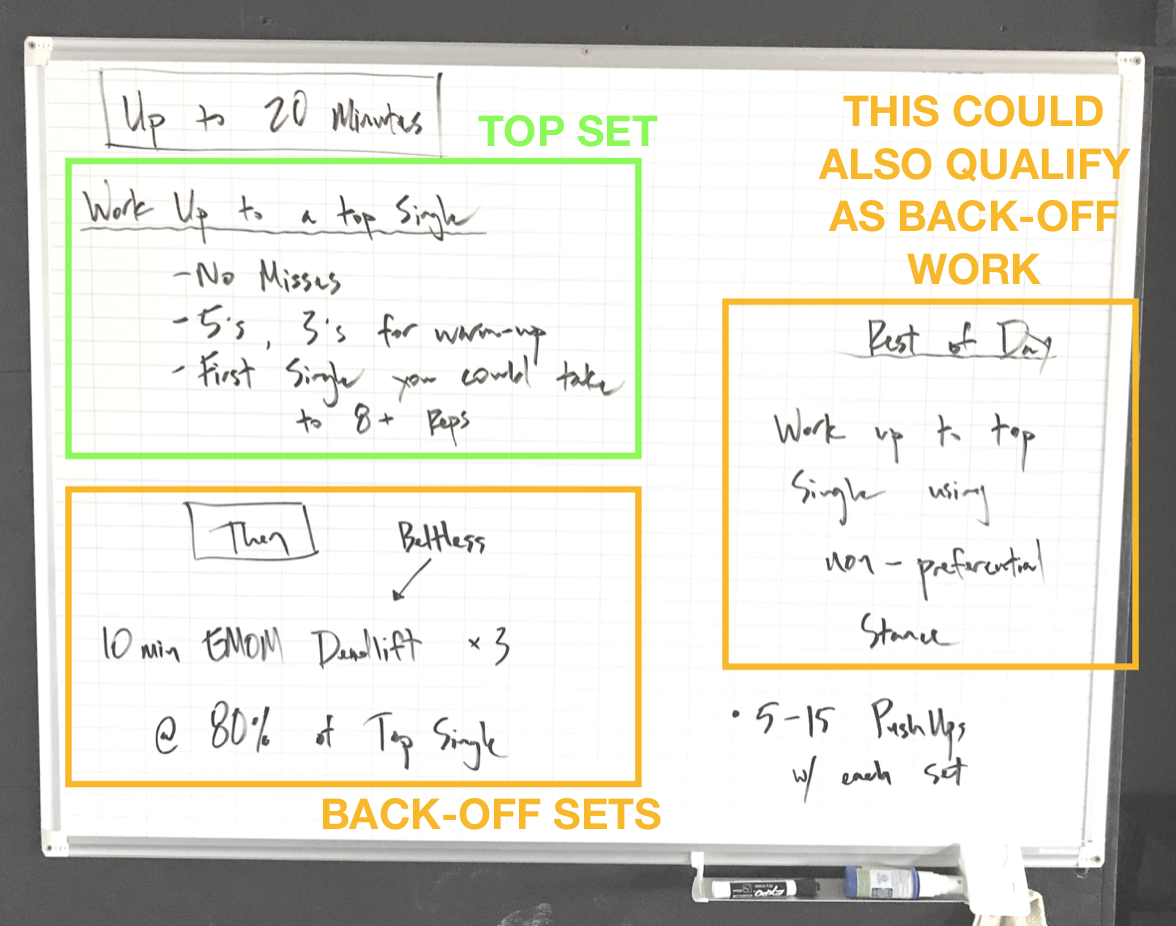To put it simply and artistically, the way I see it, warm-up sets should be used to slowly wake up and excite your nervous system. To not use warm-up sets would somewhat be the equivalent of slapping your nervous system in the face while at rest, and expecting it to perform at a high capacity, at that moment.
Warm-up sets, AKA ramp-up sets, or work-up sets are meant to prepare you for your working sets. During warm-up sets, we are not looking for much of a training effect. We are simply using the weights we take to gradually warm our body up and to slowly become acclimated to heavier weight. I like to think of warm-up sets only as stepping stones that must be taken to reach your first real set (working set).
There is no ‘set in stone’ way to go about structuring your warm-up sets. You don’t have to waste too much mental energy on deciding what weights you’re going to take for your warm-ups because they really aren’t that important. Your working sets are what is important. If you spend too much mental and physical energy on choosing and performing your warm-up weights, you won’t be able to take on your working sets with as much intensity.
But on the other hand, warm-up sets are important. If you skip warming-up altogether, your first working set will feel shockingly heavy, and you will not be able to move the weight with as high of quality as you would have, had you have gone through a series of warm-up sets.
The Warm-Up
Always start light and work heavier. Always practice crisp and deliberate repetitions. Never take a warm-up set to exhaustion.
Your warm-up weights are going to be light enough that you can move them well. Work on moving the weights like you mean it. You will need to move the weight like you mean it once you reach your working weights, so it is very productive to dial this effort in right off the bat. Not only will these weights be so light that you can move them easily, they will be so light that there is not a point to overdoing it with repetitions, it will only work to your detriment later in the session, and also months down the road.
Let’s say you are overhead pressing, and your first working set calls for 95lb for 10 reps. DO NOT just slap 95lb on the bar and jump right into your first set. DO NOT do 10 reps for each warm-up set.
This is (one of many ways) I would recommend working up to a set of 95 x 10…
Bar x 5
Bar x 5
65 x 5
65 x 3
85 x 3
95 x 1
Next set would be 95 x 10
Here is another way to warm-up to 95 x 10…
Bar x 8
55 x 6
65 x 6
75 x 4
85 x 2
95 x 1
Next set would be 95 x 10
In the first example, I took the Bar and 65lb two times. I like to do this at times. Many times, taking a weight twice will make for it feeling a lot better the second time. Any time a weight feels better, you can move it better. The better you move a weight, the better you can recruit motor units. The better you can recruit and put motor units to use, the more weight you will be able to lift, and for more repetitions.
If you do like to take weights more than once, do that earlier on in your warm-up schedule. Remember that the weights will continue to get heavier the further you go, which also carries with it a greater risk of exhaustion. Notice that in the first example, I only took 85lb one time. 85 is close enough to 95 that I wouldn’t get much from taking it again. It wouldn’t do much more than bring on unnecessary fatigue.
In the second example, more total repetitions are performed, and smaller jumps are taken. This is a matter of preference. Some lifters like taking smaller jumps. Some lifters like to take the early and lighter sets to more reps. It is a matter of experimenting with different weights and jumps to determine how you perform best, and what helps build your confidence the most to take on the working sets.
You will notice that both examples show a total of 6 warm-up sets, and that in both examples I took my working weight of 95lb for 1 rep as my last warm-up set. You may think: You did 1 rep with 95, why not just continue on to 10 and make that the first working set? This is something I like to do. Not all of the time, but I wanted to include it as an example of another variable you can use in your warm-ups. Taking 95 for one last crisp rep allowed me to feel the working weight without the exhaustion associated with going all the way to 10. A lot of times this feels nicer and less shocking than going from 3 warm-up reps to 10 working reps does, and also with a heavier weight factored in.
The better you understand how to effectively use warm-up sets, the more you will see how unimportant they are. Do them, but do them in a way that preserves energy, doesn’t take a ton of thought, and most importantly, do them in a way that has you feeling good and moving well by the time you are finished with your last warm-up set.

